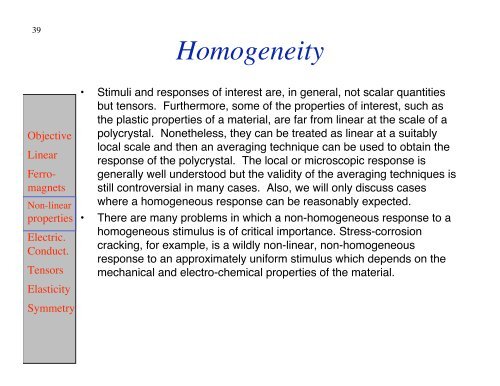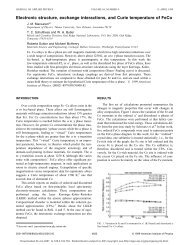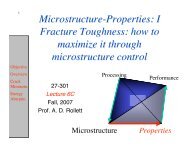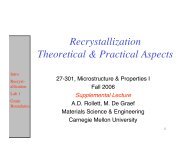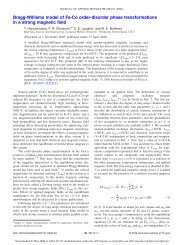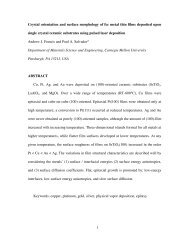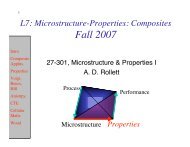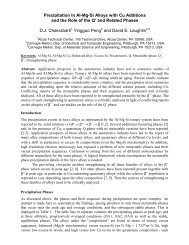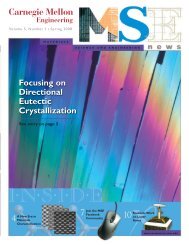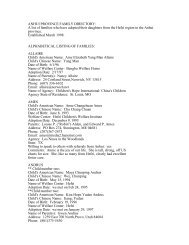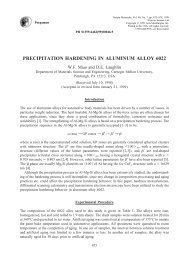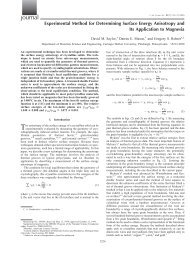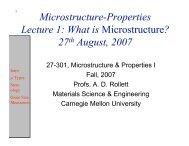Microstructure-Properties - Materials Science and Engineering
Microstructure-Properties - Materials Science and Engineering
Microstructure-Properties - Materials Science and Engineering
Create successful ePaper yourself
Turn your PDF publications into a flip-book with our unique Google optimized e-Paper software.
39<br />
Objective<br />
Linear<br />
Ferromagnets<br />
Non-linear<br />
properties<br />
Electric.<br />
Conduct.<br />
Tensors<br />
Elasticity<br />
Symmetry<br />
Homogeneity<br />
• Stimuli <strong>and</strong> responses of interest are, in general, not scalar quantities<br />
but tensors. Furthermore, some of the properties of interest, such as<br />
the plastic properties of a material, are far from linear at the scale of a<br />
polycrystal. Nonetheless, they can be treated as linear at a suitably<br />
local scale <strong>and</strong> then an averaging technique can be used to obtain the<br />
response of the polycrystal. The local or microscopic response is<br />
generally well understood but the validity of the averaging techniques is<br />
still controversial in many cases. Also, we will only discuss cases<br />
where a homogeneous response can be reasonably expected.<br />
• There are many problems in which a non-homogeneous response to a<br />
homogeneous stimulus is of critical importance. Stress-corrosion<br />
cracking, for example, is a wildly non-linear, non-homogeneous<br />
response to an approximately uniform stimulus which depends on the<br />
mechanical <strong>and</strong> electro-chemical properties of the material.


